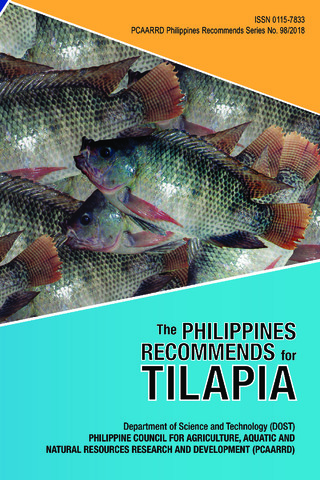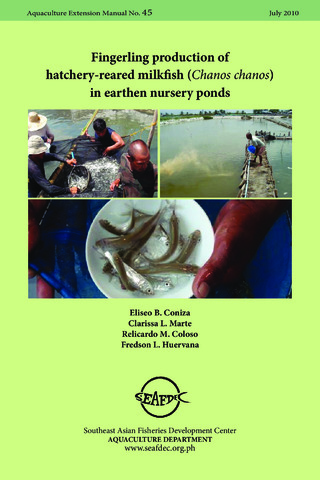Mangroves and shrimp pond culture effluents in Aklan, Panay Is., central Philippines
- Global styles
- MLA
- Vancouver
- Elsevier - Harvard
- APA
- Help

Download URL
www.ingentaconnect.comDate
2007Author
Page views
4,351ASFA keyword
AGROVOC keyword
Metadata
Show full item record
Share
Abstract
The capacity of a natural mangrove system in Ibajay, Aklan province, central Philippines to process shrimp pond culture effluents was assessed through analysis of mangrove community structure and 24-hr monitoring of water quality parameters (NH3-N, NO3-N, PO4-P, sulfide, and total suspended solids). Results from the latter showed decreased nutrient levels within 6 hrs after daytime draining of effluents into the mangrove stand, but only nitrate reduction was statistically significant. Based on nitrate loss, volume of water drained, mangrove area, and shrimp farming data (e.g., N loss from ponds, feed composition, feeding rate), calculations show that 1.8–5.4 ha of mangroves are required to remove nitrate wastes from 1 ha of shrimp pond. N uptake by the mangrove macroflora was supported by data showing longer nipa palm leaflets and faster mangrove seedling growth in the experimental mangrove receiving effluents compared to a control mangrove, but not from mangrove biomass measurements. These results have significant implications for the Philippine brackishwater pond culture industry to conserve or rehabilitate mangroves as potential pond biofilters, to implement legally mandated 20- and 50-m greenbelts, and to reverse the national 0.5 ha mangrove: 1.0 ha pond ratio.
Suggested Citation
Primavera, J., Altamirano, J., Lebata, M. J. H. L., delos Reyes, A. A., Jr., & Pitogo, C. L. (2007). Mangroves and shrimp pond culture effluents in Aklan, Panay Is., central Philippines. Bulletin of Marine Science , 80(3), 795-804. http://hdl.handle.net/10862/2067
Type
ArticleISSN
0007-4977Collections
- Journal Articles [1258]
Related items
Showing items related by title, author, creator and subject.
-
Series: Philippines Recommends Series; No. 98/2018
The Philippines recommends for tilapia
The Tilapia Technical Committee 2017 (DOST-PCAARRD, 2018)Tilapia is one of the most commercially important commodities in fisheries and aquaculture. Although tilapia is relatively easy to propagate and culture, the Philippine tilapia industry needs the necessary boost in the ... -
Quantitative and qualitative analyses of the bacterial microbiota of tilapia (Oreochromis niloticus) cultured in earthen ponds in the Philippines
The quantity and composition of the bacterial microbiota in the rearing water, sediment, gills and intestines of tilapia Oreochromis niloticus collected every 2 weeks from Day 30 to Day 120 after stocking for grow-out ... -
Series: Aquaculture extension manual No. 45
Fingerling production of hatchery-reared milkfish (Chanos chanos) in earthen nursery ponds
Coniza, Eliseo B.; Marte, Clarissa L.; Coloso, Relicardo M.; Huervana, Fredson L. (Aquaculture Department, Southeast Asian Fisheries Development Center, 2010)Fingerling production of milkfish in ponds maybe operated as a commercial enterprise or a component of milkfish farming that comprises nursery, transition and rearing or grow-out phases. The fishpond nursery is used to ...





